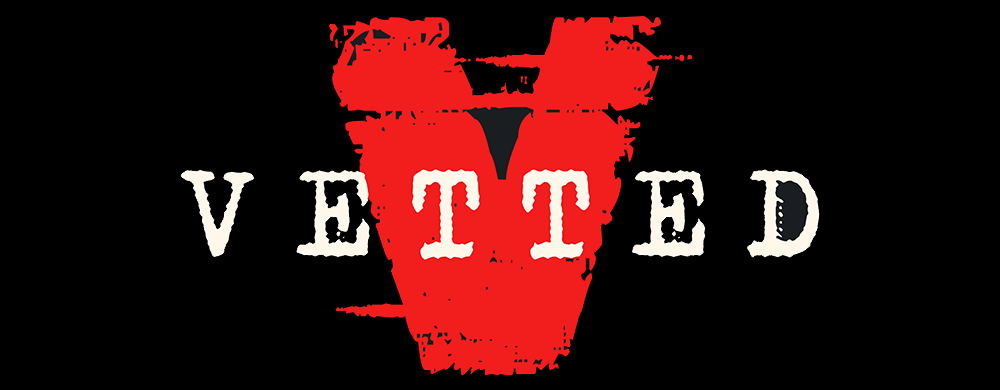Chris Bledsoe Reveals NEW Details about April 2026 Prediction
There’s something mesmerizing about the unknown. For decades, stories of unidentified flying objects, mysterious orbs, and predictions of coming revelations have captured the world’s imagination. In a recent sit-down between Chris Bledsoe—author of “UFO of God”—and journalist Ross Kolart at the Contact in the Desert conference, this fascination hit new heights. With global tensions rising, especially between Iran and Israel, Bledsoe’s claims and predictions have stirred both controversy and curiosity within the UFO community. But what’s really at the heart of this story, and should we be taking these predictions as cosmic gospel or with a healthy dose of skepticism?
The Orbs, the Missiles, and the Questions Left Behind
Bledsoe’s narrative centers around prophetic visions allegedly given to him by a mysterious female entity. In his account, the orbs—anomalous, glowing spheres—would emerge whenever conflict escalates between Iran and Israel. According to Bledsoe, these orbs are not only indicators but also interveners, capable of stopping catastrophic events and ushering humanity towards disclosure—the much-anticipated moment when the truth about extraterrestrials would be revealed to the public.
He recounts writing to officials and explaining that if missiles ever flew between Iran and Israel, the orbs would appear to ‘wake people up and stop it.’ He’s even said this to government liaison Tim Taylor and NASA, warning of this very scenario long before such exchanges became headline news.
And yet, as real rocket fire breaks out and tensions threaten to draw the world into wider conflict, keen observers—like Patrick from Vetted—are left scratching their heads. Where are the orbs now? If they’re meant to shield humanity from disaster, why would such chilling episodes play out seemingly unchecked? Could they be waiting for a more pivotal moment, or is there perhaps less reality to these visions than meets the eye?
Prediction or Paradox: April 2026 and the “New Knowledge”
One of the more intriguing aspects of Bledsoe’s story is his much-discussed prediction for April 2026. He says that the same entity informed him of a significant, cosmic alignment: the star Regulus, appearing on the horizon in front of the Sphinx as a red star, would mark a shift into a “new knowledge.”
Notably, Bledsoe clarifies that this isn’t a doomsday prophecy or the return of a messianic figure but rather a moment where humanity receives a fresh wave of understanding—a transition, not an apocalypse. The mystery deepens with the suggestion that this “new knowledge” might pertain to secrets beneath the pyramids, or even official UFO disclosure.
Critics, however, remain skeptical. As Patrick points out, predictions can be frustratingly non-specific. If “new knowledge” is so vague, how would we even know if it happens? And when Bledsoe extends the date into 2027, the timeline begins to feel even more uncertain. Are we witnessing a genuine prophecy unfolding before our eyes, or simply moving the goalposts every few years?
Are Orbs Divine, Alien—or Something Else?
Religious interpretations of the orb phenomenon add yet another layer to the conversation. According to Bledsoe and others, these glowing entities might not be extraterrestrial at all, but rather angels—spiritual beings that appear in response to prayer rather than rituals. This spiritual framing blurs the line between the UFO phenomenon and traditional faith, raising perennial questions: Are experiences with orbs encounters with divinity, with advanced beings, or with something altogether different?
Admirably, Bledsoe admits he can’t prove these claims in a court of law. On the one hand, he shares powerful testimony about healing, prophecy, and events beyond everyday perception. On the other, he concedes that he doesn’t know everything, echoing a sentiment shared by many genuine seekers—there is humility in the face of the unknown.
The Shadow of Secrecy: Who Holds the Truth?
So why does the mystery endure? Why does official denial persist, even as experiences and evidence pile up? Bledsoe, like many, believes national security is the driving force. He asserts that the U.S. government knows more than any other player about these anomalous objects, closely guarding information for reasons both tactical and technological.
But, as Patrick points out, making such confident statements is problematic. No single individual could possibly know the depth of every nation’s research and secrets regarding extraterrestrials. It points to the challenge of untangling belief, secondhand information, and actual fact in this shadowy field. And therein lies the rub—while personal convictions and “insider” revelations can be tantalizing, they often lack the solid foundation needed for broader acceptance.
Sifting Through Faith, Fact, and Fable
The enduring lure of these stories—of divine visitations, cosmic prophecy, orbs hovering over battlefields, and the hope of imminent disclosure—speaks to a deep yearning for answers to some of our oldest questions. Yet as with many matters of belief and prediction, clarity remains elusive. Even those who stand at the epicenter of these experiences, like Chris Bledsoe, wrestle with doubt and uncertainty.
Perhaps that is what makes this subject so captivating. In a world obsessed with evidence and certainty, the UFO phenomenon asks us to sit with mystery, to entertain speculation, and to accept that sometimes, definitive answers will remain just out of reach.
Conclusion: What Should We Believe?
Ultimately, the fascination with Bledsoe’s predictions, the orbs, and the UFO of God narrative highlights the complexity at the heart of the UFO phenomenon. It’s an area where belief collides with evidence, and where those seeking answers must navigate between skepticism and open-mindedness.
Whether we’re one cosmic alignment away from a new revelation—or just wading through another chapter of modern myth-making—the journey itself might be just as important as the destination. As Patrick reminds viewers, every day is a gift. Maybe the real lesson is to remain curious, question boldly, engage in open discussion, and above all, acknowledge that there’s far more to our universe—and ourselves—than we may ever fully understand. Keep watching the skies, and keep asking, “What if?”
